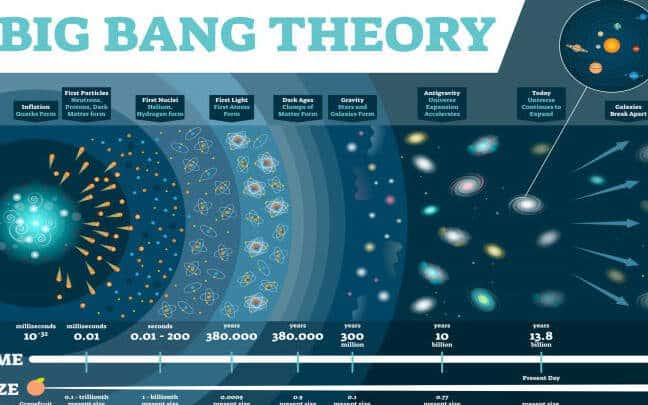The origin of the universe is believed to be explained by the Big Bang theory. This concept emerged from the observation that galaxies are rapidly moving away from each other in every direction, suggesting that they were propelled by a powerful primordial explosion.
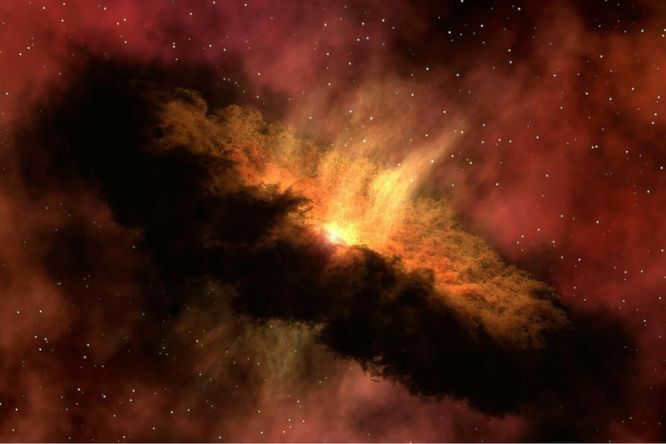
The Definition of the Big Bang
The Big Bang theory is the principal explanation for the formation of the universe. In simple terms, the universe as we comprehend it originated from an incredibly hot and dense single point that gradually expanded and stretched, initially at an unimaginable pace and then at a more quantifiable rate, over the course of the next 13.8 billion years to the continuously expanding cosmos that we are familiar with today. Current technological advancements do not yet permit astronomers to directly observe the origins of the universe, therefore much of our understanding of the Big Bang is based on mathematical equations and models. Nevertheless, astronomers can observe an “echo” of the expansion through a phenomenon called the cosmic microwave background.
What was the appearance of the Big Bang?
The Big Bang did not occur as an explosion in the typical sense. In reality, there was no explosion whatsoever. At the time it occurred, no harm was done and nothing was obliterated. It marked the mere inception of our universe. Throughout the Big Bang, there was a dilation of space itself, a concept derived from the equations of Einstein’s general theory of relativity.
The origin of the cosmos
Around 13.7 billion years ago, the entire cosmos was compressed into a minuscule point. Subsequently, a sudden and forceful expansion occurred, propelling our universe at a pace faster than that of light. This phase, known as cosmic inflation, endured for a brief moment in time. As cosmic inflation reached its enigmatic conclusion, the more conventional interpretations of the Big Bang took hold. The process of “inflation” began to populate our Universe with the matter we recognize today: particles, atoms, and the substances that would eventually form stars and galaxies.
In the field of cosmology, the term “inflation” denotes the rapid enlargement of scales, whereby the rate of growth is directly proportional to the scale’s value. This term aptly characterizes the expansion of the early universe.
As per NASA, all of these events occurred within the initial second following the inception of the universe, during which the temperature was incredibly high, approximately 10 billion degrees Fahrenheit (5.5 billion Celsius). At this point, the cosmos was comprised of an abundance of fundamental particles such as neutrons, electrons, and protons, which served as the basic building blocks for everything that exists today.
Over time, free electrons combined with nuclei to form neutral atoms, which possess an equal amount of positive and negative electric charges. Consequently, this allowed light to finally permeate through the universe, approximately 380,000 years after the occurrence of the Big Bang.
What is the true age of the universe?
Based on data from the Planck satellite, scientists now estimate that the universe is 13.82 billion years old, slightly older than the previously believed age of 13.7 billion years. Ongoing research conducted by the observatory continues to provide new insights, with periodic releases of new CMB maps.
Despite the valuable information provided by these maps, they also present new mysteries to be unraveled. One such mystery is the slight reddening (indicating higher temperatures) observed in the Southern Hemisphere compared to the Northern Hemisphere. According to the big bang theory, the CMB should be uniform regardless of the observation point. Additionally, studying the CMB allows astronomers to gain insights into the composition of the universe. It is believed that a significant portion of the cosmos consists of “dark matter” and “dark energy,” which cannot be detected with conventional instruments. In fact, only 5% of the universe is thought to be composed of detectable matter such as planets, stars, and galaxies.
TechInsider Network Edition
Founder of "Fashion Press" LLC: 119435, Moscow, Bolshoi Savvinsky passage. 12, p. 12, str. 6, floor 3, room II;
Address of the editorial office: 119435, Moscow, Bolshoi Savvinsky passage. 12, p. 6, str. 6, floor 3, room II; Address of the editorial office: 119435, Moscow, Bolshoi Savvinsky passage. 6, floor 3, room II;
Chief Editor: Nikita Vasilenok
Email address of the editorial office: [email protected]
Phone number of the editorial office: +7 (495) 252-09-99
Label for the information product: 16+
The network edition is registered with the Federal Service for Supervision of Communications, Information Technologies and Mass Media, registration number and date of registration decision: series EL No. FS 77 – 84123 dated November 09, 2022.
© 2007 – 2023 "Fashion Press" Ltd.
By uploading content to the Website, the User gives "Fashion Press" LLC non-exclusive permission to utilize, reproduce, distribute, generate derivative works, and publicly display the content.
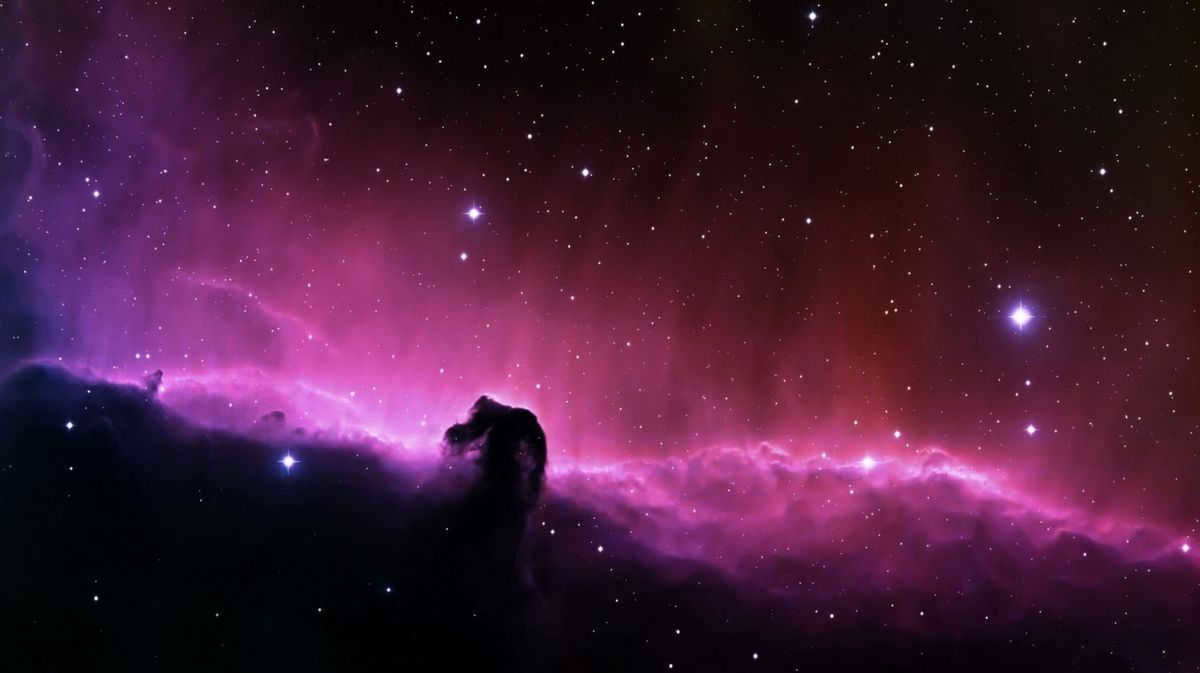
We are launching a brand new segment called “The Intellectual Hour” – tailored for those who have a passion for science. We will delve into the intricacies of the universe, exploring the various processes that take place within it. Our discussions will encompass the secrets of physics and astrophysics, mathematics, statistics, psychology, philosophy, and even artificial intelligence. If your heart skips a beat at the mention of words like “knowledge,” “representation,” “blackbody,” “equation,” “non-transitive,” and “quanta,” then this column is tailor-made for you.
Today, we have the opportunity to delve deeper into the mysteries of the Big Bang, the cosmic microwave background radiation, and the concept of inflation, or the expansion, of the Universe. Our esteemed speaker for this lecture is none other than John Gribbin, an astrophysicist hailing from Great Britain. Mr. Gribbin is renowned for his work in popular science literature, covering topics such as quantum physics, evolution, the origins of the Universe, climate change, and much more. His latest publication, “13.8. In search of the true age of the Universe and the theory of everything,” has recently been translated into Russian and offers profound insights into the nature of our existence.
Relic Radiation: The Beginning
In 1983, the Soviet RELIKT-1 became the first Earth satellite specifically designed to explore relic radiation. While it demonstrated the possibility of such missions, it lacked the sensitivity to confirm the variations of radiation across different areas of the sky. However, confirming these variations was crucial, as if the radiation truly originated from the Big Bang, it should contain evidence of the early Universe’s oscillations that led to the formation of the galaxies we observe today.
By the early 1980s, cosmologists were concerned about the seemingly uniform nature of relic radiation. The flatness of the Universe, which represents a delicate balance between expansion and contraction, appeared too impeccable to be true.
The critical density required for maintaining the flatness of the Universe may change over time, as it is not constant for different cosmic eras. According to Einstein’s equations, if the Universe originated from the Big Bang and its density is slightly higher than the necessary value for a flat model, this discrepancy will grow as time passes. This is because the presence of excessive matter will slow down the expansion and keep the space densely populated.
On the other hand, if the initial density of the Universe is slightly lower than the critical density, this difference will continue to increase in the opposite direction, causing matter to be distributed less densely. Achieving absolute flatness is considered to be highly improbable among all the potential models.
Although this issue had been known to everyone beforehand, it didn’t receive much attention until the late 1970s when Robert Dicke and Jim Peebles, two researchers from Princeton involved in the discovery of relic radiation in the mid-1960s, brought it to the forefront of scientific discussion.
Prior researchers had already determined that in order to explain the flatness of the present-day universe, the density at the time of the Big Bang must have been no more than one quadrillionth (1/10th to the 15th power) of the critical density at that time. It was clear that this value held significant implications for understanding the origin of the universe, but its true meaning remained elusive until December 6, 1979.
Alan Guth, the American physicist and cosmologist who initially suggested the concept of cosmic inflation, was a young researcher at Cornell University when he attended Dicke’s lecture on the conundrum of the flat universe in that particular year. Fascinated by this celestial enigma, he continuously pondered over it and eagerly delved into extensive literature on the subject of cosmology.
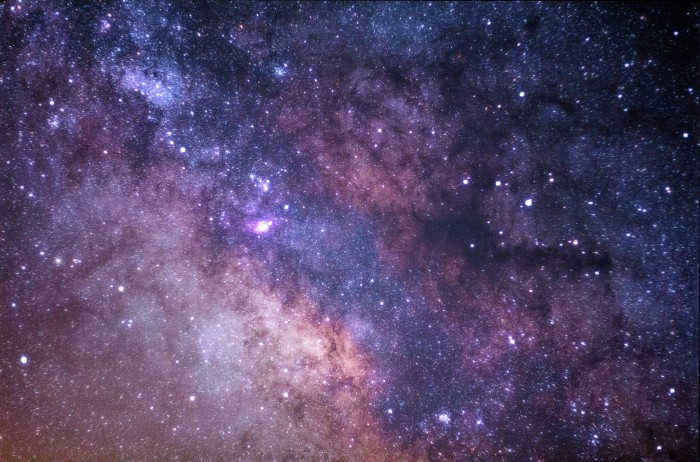
The fusion of knowledge about particle physics and cosmological data started to form in his mind, and on the 6th of December, after a discussion about his favorite topic with Sidney Coleman, who had traveled from Harvard, he had a revelation.
He remained seated at his desk until morning, and on Friday, the 7th of December 1979, he recorded his truly groundbreaking discovery in a notebook with the casual title “A TRUE PROSPECT”.
He came to the realization that he had come across something of great significance. Guth came to the realization that during the formation of the Universe in the initial fraction of a second, there occurred a phenomenon known as symmetry breaking, which involved a phase transition similar to the condensation of steam into water and the subsequent release of energy. This release of energy was so powerful that it initiated a rapid expansion process, which Guth referred to as inflation or “bloating,” and ultimately culminated in the event known as the Big Bang. (It is worth noting that inflation is often considered to be a part of the Big Bang, but it is crucial to understand that it actually preceded it.)
The Expansion of the Universe
What caused it? Let’s examine it closely. During the expansion process, the Universe’s size grew at an exponential rate, doubling every 10 to the power of -38 seconds. In other words, everything we observe in the Universe “expanded” from a state that was a billion times smaller than a proton to the size of a basketball in approximately 10 to the power of -30 seconds. To put this into perspective, a tennis ball could have grown to the size of the entire visible space in the same amount of time. Only after this rapid expansion did the Big Bang occur. Russian-born American scientist Andrei Linde and other researchers further developed this concept.
The reason why the universe appears so uniform is because it originated from such a minuscule state where density variations were nonexistent.
This particular model also addresses the issue of flatness: inflation effectively ensures that the universe becomes flat, just like how the surface of an inflated balloon or any other expanding sphere naturally becomes flat. For example, if we were to take a tennis ball, which is a two-dimensional object wrapped around the third dimension, and inflate it to the scale of the observable Universe, any attempt to analyze its surface would be unable to detect any deviation from flatness.
The same phenomenon occurs in the actual Universe, but in three dimensions instead of two (This theory also provides a resolution to the horizon problem, as distant regions of the Universe that appear to be disconnected were actually connected before, but separated by an extremely rapid expansion of space. This expansion occurred at a rate faster than the speed of light, although nothing can travel through space faster than light. This compelling evidence for the existence of inflation was initially discovered by Sandidge and later confirmed by observations).
The initial state within this model can be attributed to a quantum fluctuation – a slight distortion in the fabric of the space-time continuum that did not dissipate and experienced inflation.
Quantum Fluctuations and the Origin of the Universe
Additionally, during the period of inflation, the early universe experiences the emergence of new quantum fluctuations. These fluctuations also undergo inflation, resulting in distortions in the fabric of matter. These distortions, known as anisotropy, serve as the building blocks for the formation of cosmic structures like galaxies, clusters, and superclusters. Furthermore, these quantum fluctuations must have left a lasting imprint on the relic radiation that originated from the Big Bang.
By examining the variations in temperature across different regions of the sky in the present-day radiation, we can gain insights into the history of the universe and its evolution.

The fluctuations will be around 0.00003 K, which is about one hundred thousandth of the overall temperature. By relying on the inflation theory, we can make predictions about the specific locations in the sky where we can observe the traces of these “inflated” quantum fluctuations. In order to detect these subtle variations, we need highly accurate sensors. It is not surprising that RELICT-1 (by the way, RELICT-2 was never launched) was unable to capture these faint deviations. However, the subsequent satellite designed to study relict radiation was equipped with more sensitive sensors.
John Gribbin’s book provides a comprehensive and detailed account of the study of the universe, including the determination of its age and the analysis of relic radiation.
A recent study suggests that a second cosmic explosion, occurring shortly after the Big Bang, may have resulted in the widespread presence of undetectable dark matter throughout the universe. The main details of this fascinating discovery are covered by “Hitech”.
Scientists speculate that alongside the Big Bang, there may have been an obscure, “dark” Big Bang that saturated space with enigmatic dark matter. By studying gravitational waves, we can gather evidence of this event through the observation of ripples in the fabric of space-time.
The fundamental theory
The majority of cosmologists maintain the belief that following the Big Bang, during the initial moments of its existence, the universe experienced a period of rapid and significant expansion known as inflation. The cause of this expansion remains unknown, but its discovery is crucial in order to provide an explanation for various observations, such as the universe’s large-scale geometric flatness.
Supposedly, the increase in prices was a result of an unusual quantum field, which is a fundamental entity that spreads throughout all of space-time. When inflation ended, this field fragmented into a flow of particles and radiation, leading to the occurrence of the “Hot Big Bang” that scientists typically link with the origin of the universe. As time went on, these particles combined to form the initial atoms when the cosmos was approximately 12 minutes old, and then, hundreds of millions of years later, they started to come together to create stars and galaxies.
The absent component
However, there is an additional component in the cosmological combination: dark matter. In the field of astronomy and cosmology, as well as in theoretical physics, there exists a type of matter that does not engage in electromagnetic interaction and is consequently impossible to directly observe. This substance accounts for roughly 25% of the mass-energy in the Universe and is only detectable through its gravitational effects.
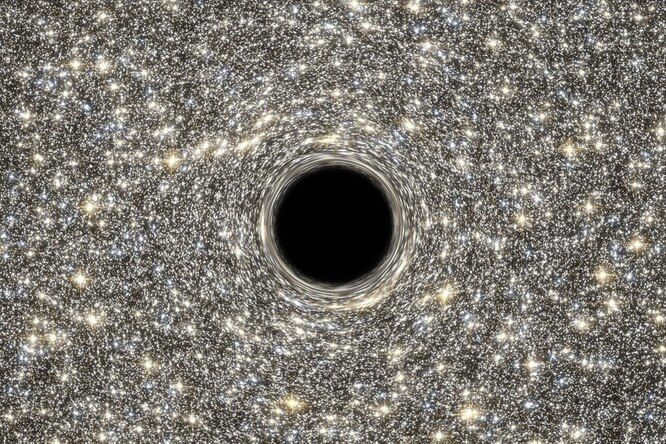
In the most basic models, the conclusion of inflation and the subsequent Hot Big Bang also resulted in a widespread presence of dark matter in the Universe. This dark matter followed a separate evolutionary path, albeit for the sake of simplicity and in an attempt to provide some explanation for its existence and emergence, as noted by the authors of the recent study. Furthermore, due to the lack of interaction between dark matter and regular matter, it is plausible that dark matter experienced its own separate “dark” Big Bang, the researchers have suggested.
Dark Big Bang
The researchers conducted an investigation into the potential appearance of a Dark Big Bang. They put forward the theory that a new quantum field, known as the “dark field,” is essential for the independent formation of dark matter.
In this alternative scenario, the Dark Big Bang commences once inflation has subsided and the universe has expanded and cooled sufficiently to compel the dark field to undergo its own phase transition, resulting in the creation of dark matter particles.
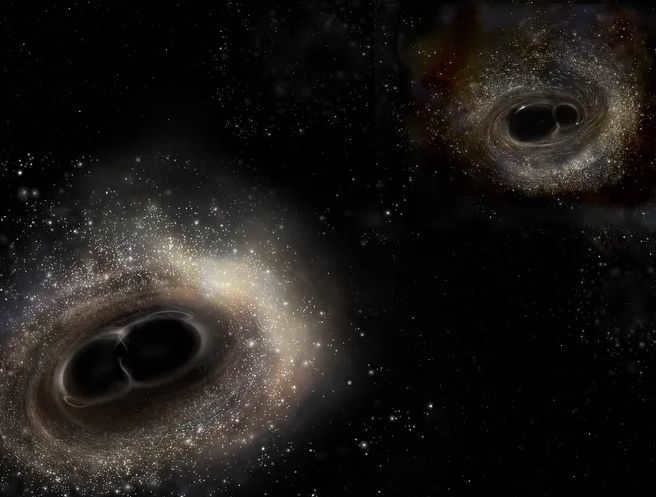
Based on their findings, the scientists came to the conclusion that the Dark Big Bang must adhere to a set of limitations. If it happened too early, it would result in an excessive amount of dark matter in the present day. Conversely, if it occurred too late, there would be a shortage of dark matter. However, if another explosion took place when the universe was less than a month old, it would align with all the observations we currently have.
What are the advantages of the theory?
The Dark Big Bang theory offers several benefits. To begin with, it aligns with the existing knowledge about dark matter: if dark matter does not interact with regular matter, there is no reason for them to have a shared origin. Additionally, it enables scientists to develop models of dark matter without concerns about how they would impact the behavior of normal matter in the early stages. This provides researchers with greater flexibility in creating models. Most importantly, this new theory by physicists addresses the fundamental question of the universe – the origin and abundance of invisible dark matter.
Is it possible to test the theory?
Furthermore, scientists have discovered that the Dark Big Bang produces a unique pattern in gravitational waves, which are disturbances in the fabric of space-time that continue to spread across the cosmos. As a result, there is potential for the theory to undergo experimental verification in the future.
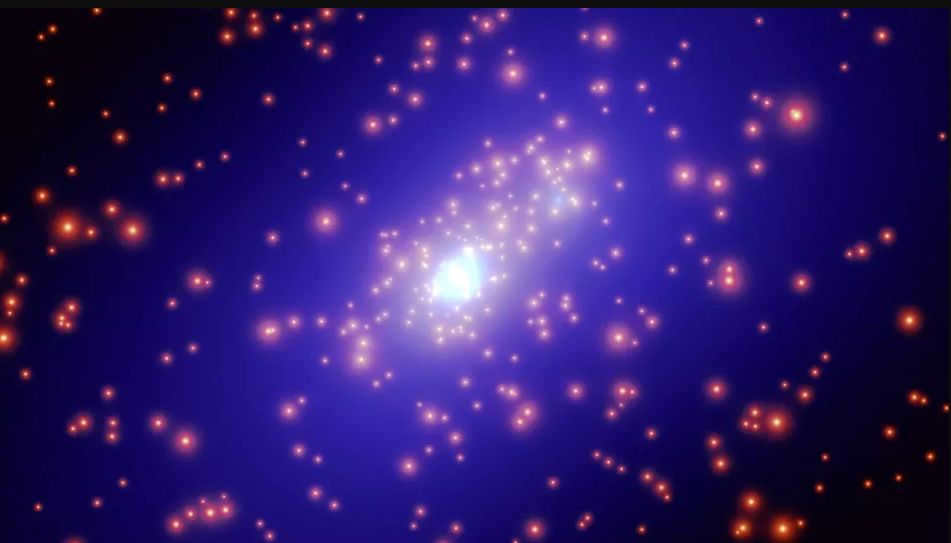

Scientists acknowledge that the existing gravitational wave studies lack the necessary sensitivity to detect evidence of a Dark Big Bang. However, an alternative approach utilizing a pulsar-based time matrix, such as the NANOGrav experiment, holds the potential to achieve this goal.
For further information:
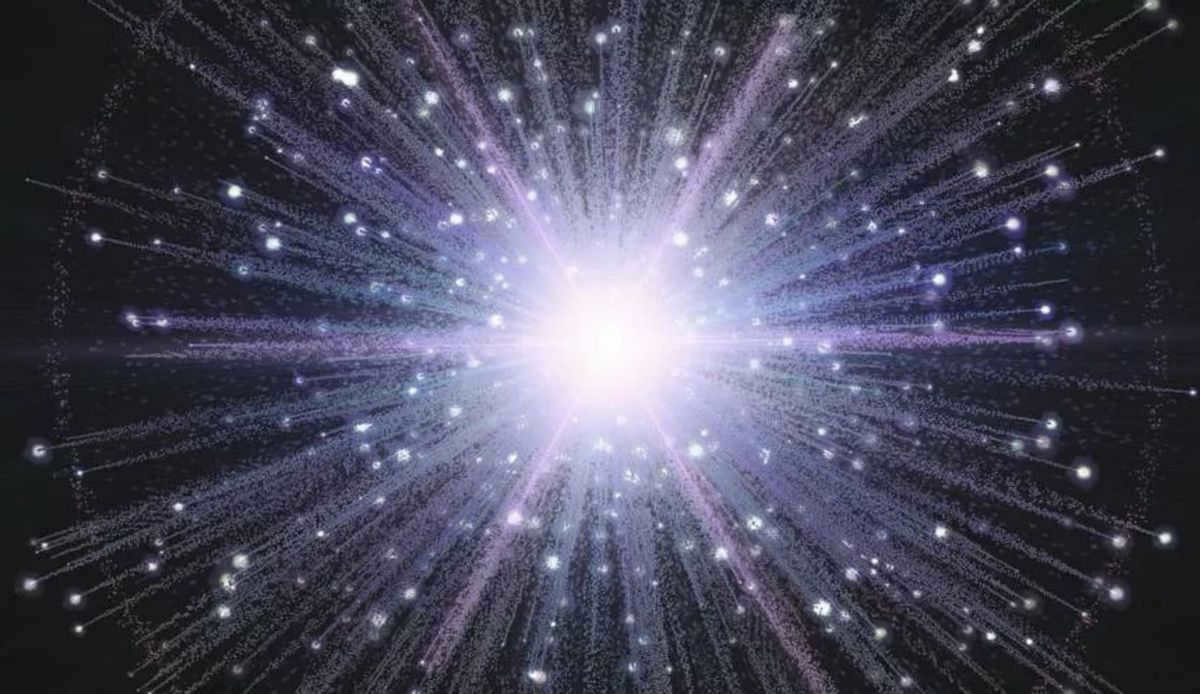
The Big Bang, often misunderstood as the initial explosion, is actually a boundary beyond which we are unable to venture and where the concepts of space and time originated. What do we comprehend regarding this early era?
When Hubble made the groundbreaking discovery in 1929 that the Universe was expanding, it had significant implications for cosmology. In fact, if the Universe is expanding, it means that it was once much more condensed. Although it is possible to rewind time to a certain extent, it is impossible for us to reach a point of zero time (the equations simply do not permit it). However, we are capable of approaching it closely.
Expansion and initial components
Approximately 13.77 billion years ago, it is understood that our universe was extremely hot (surpassing a quadrillion degrees). It was also remarkably tiny in size. Scientists propose that during its infancy, the cosmos experienced a phase of extraordinarily rapid expansion known as inflation. In an incredibly brief moment, our universe grew by a minimum of a factor of 10^52.
After this expansion phase concluded, whatever caused this inflation (its origin remains unknown) filled the universe with matter and radiation.
During this period, the universe was excessively hot and dense for anything stable to form. The cosmos consisted solely of a mixture of elementary particles of matter and antimatter, originating from pure energy containing quarks and antiquarks, electrons and positrons, neutrinos and antineutrinos, which promptly annihilated each other upon contact.
Furthermore, within that initial second, the nuclear force facilitated the merging of quarks, resulting in the formation of either protons or neutrons. Subsequently, these protons and neutrons combine to shape the nuclei of hydrogen atoms.
Following the initial second, the universe continued to undergo expansion and gradually cooled, leading to the convergence of protons and neutrons due to the strong nuclear force. Approximately three minutes later, the first nuclei of atoms, which are slightly more intricate than the nuclei of hydrogen atoms, became visible.
The process of nucleosynthesis will naturally persist for a few minutes, after which we must await the fusion machines, otherwise known as the first stars, to enhance our understanding of the elements.
All of this knowledge is solely derived from calculations, as none of these initial stages can ever be observed through our instruments. Our world will remain opaque until it reaches an age of 380,000 years, when the first stars “illuminate”.
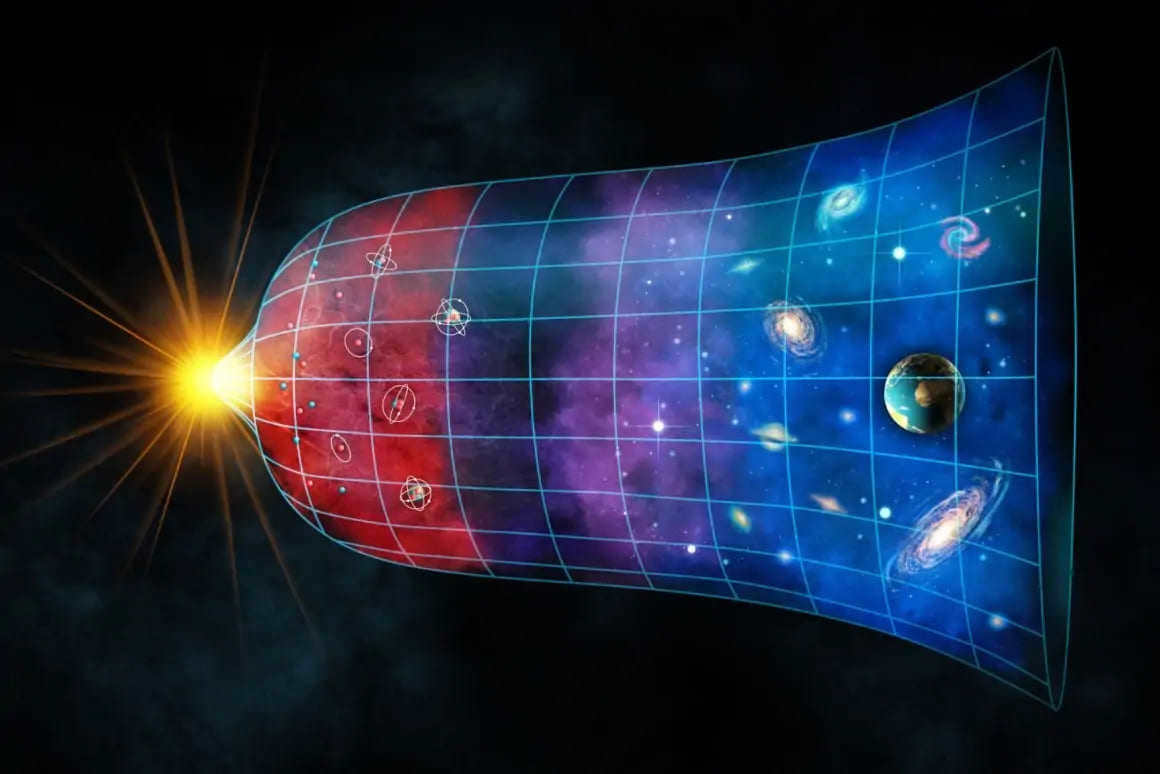
Dark matter and inflation
Although some details are indeed inferred, there is still much that remains unknown, particularly during the period preceding the formation of the initial elements.
The issue of dark matter, for instance, arises. We lack knowledge about its composition, but we are aware that it constitutes over 80% of the matter in the universe. Additionally, we are uncertain about when or how dark matter emerged. Did it manifest within the first few seconds or at a later stage? Did it impact the primordial chemistry that led to the formation of the first elements, or did it simply exist in the background? We do not have the answers.
Inflation also poses a challenge. We are unaware of the source that powered this extraordinary expansion event. Although we know the duration of this phase, we do not understand how or why it ultimately concluded.
Matter and Antimatter Interaction
One significant challenge in the field of particle physics is the issue of matter and antimatter asymmetry. Experimental evidence indicates that matter and antimatter exhibit perfect symmetry: for each particle of matter generated through reactions in the universe, there exists a corresponding particle of antimatter.
However, it is well-established that during the pivotal “first second,” matter emerged as the dominant form, surpassing antimatter. As a result, these two forms of matter displayed distinct behaviors. Currently, the underlying reasons for this imbalance remain unidentified.
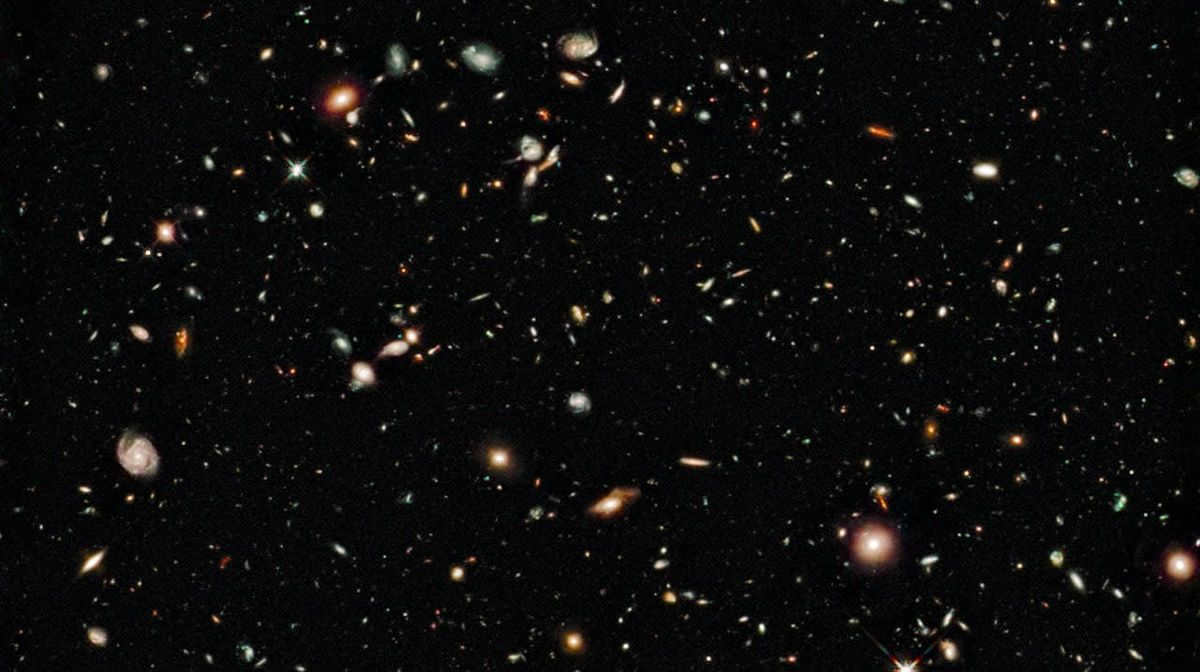
If we are unable to directly observe the state of the universe during its early moments, we can attempt to replicate those conditions using our advanced particle accelerators.
That chaotic explosion likely caused a disturbance in the fabric of space-time. With future technological advancements, we may be able to detect the gravitational waves resulting from this renowned event known as the Big Bang.
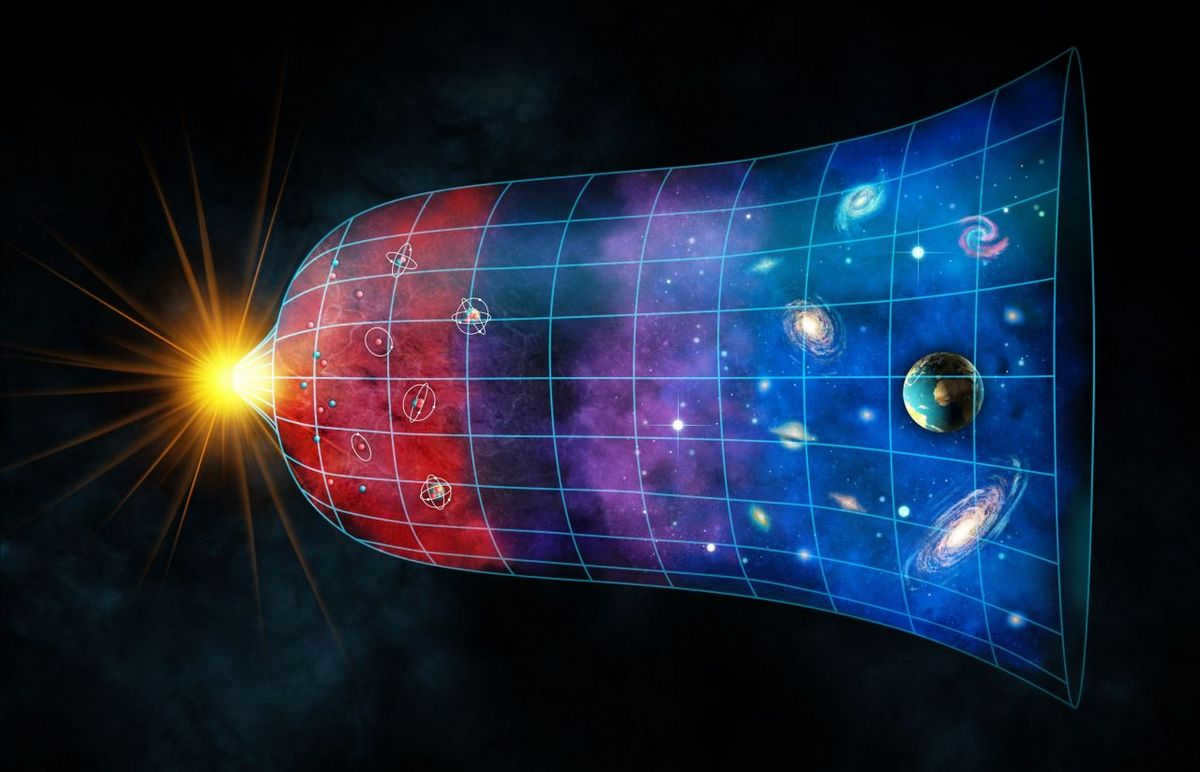
Approximately 13.8 billion years ago, an enigmatic event known as the Big Bang occurred. This extraordinary phenomenon involved a tremendous expansion that caused a potential singularity to explode like a balloon, ultimately leading to the formation of our vast universe. Similar to how it takes a specific amount of time for a seed to grow into a fully matured plant, it took slightly over seven days for our universe to be created as we perceive it today. However, it was during the initial three minutes following the Big Bang that the majority of significant occurrences transpired. Therefore, let us delve into what physicists hypothesize unfolded in the first three minutes after the momentous Big Bang!
The Planck epoch
Following the occurrence of the Big Bang, the initial phase that arose was known as the Planck epoch. This distinct span of time witnessed the temperature of the universe reach a staggering 10^32 K, an intensity so immense that all four fundamental forces (including gravitational force, electromagnetic force, weak force, and strong force) coexisted as an all-encompassing superpower. This epoch endured for a mere 10^-43 seconds. Due to the inability of modern physical theories to be applied at the Planck scale in order to comprehend the events that transpired, our understanding of the physics surrounding the Planck epoch remains quite limited.
The Era of Great Unification
The era known as the “Era of Great Unification” commenced when the universe was a mere 10 -43 seconds old and continued until 10 -36 seconds after the occurrence of the Big Bang. Following the Planck epoch, the omnipotent force of gravity became distinct from the other three fundamental forces of the Standard Model. Consequently, during the Era of Great Unification, the electroweak interaction, the strong interaction, and the electromagnetic interaction were unified as one cohesive force. Additionally, as this epoch drew to a close, the temperature declined from 10 32 K to 10 29 K.
Epochs of Inflation and Electromagnetism
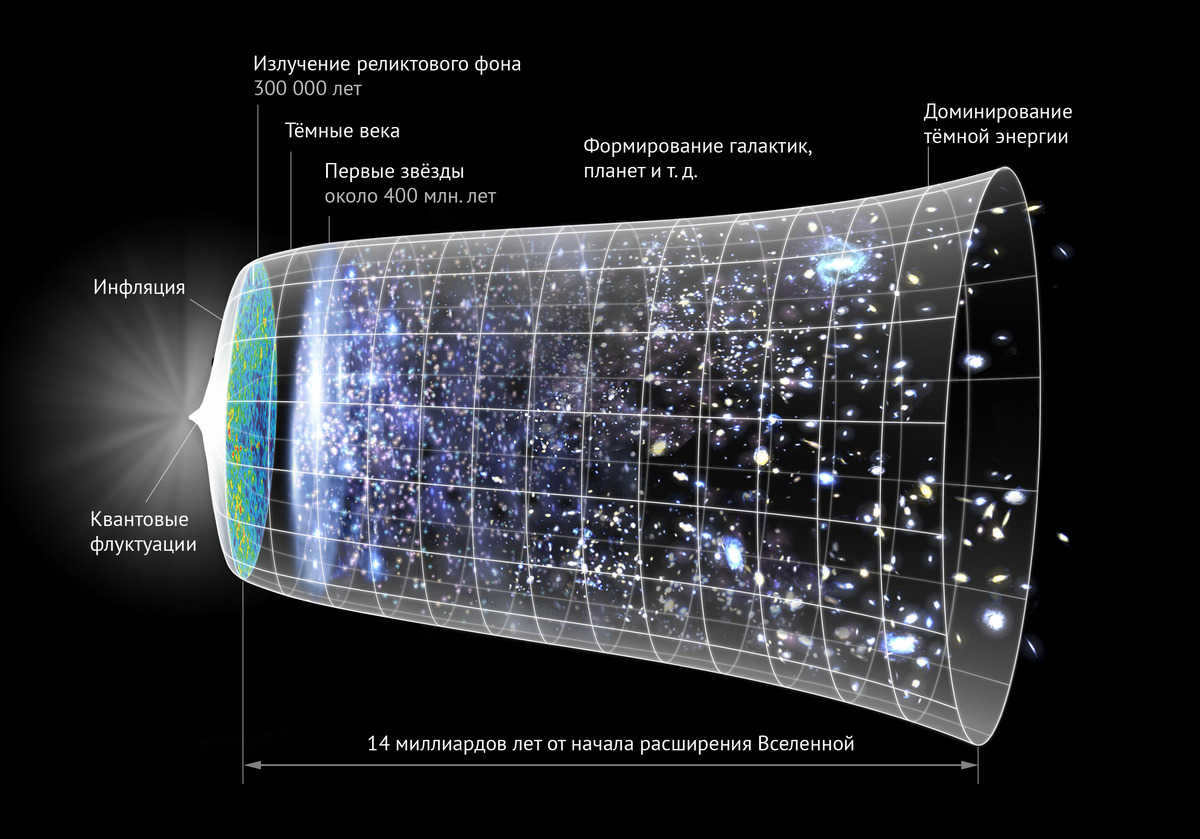
The electroweak epoch marked the third phase following the occurrence of the Big Bang. During this period, the strong force underwent a separation from the other two forces, consequently leaving the weak and electromagnetic force as a unified force. Furthermore, it was during this epoch that cosmic inflation commenced, when the universe was a mere 10 -33 seconds old. Inflation caused the universe to expand exponentially, going from the size of a proton to the size comparable to that of a fist. This expansion took place at a rate exceeding that of light, although the precise mechanics governing this incredibly rapid expansion remain unclear.
Following the relatively short duration of cosmic inflation, the universe entered a phase of normal expansion. At this point, the universe had reached an age of 10 -32 seconds, with the temperature dropping to 100 trillion trillion kelvin. Additionally, it was during this time that W and Z bosons came into existence, an important development.
The electroweak era concluded approximately 10^-12 seconds after the occurrence of the Big Bang, marking the initiation of the quark era. At this point in time, the universe had undergone sufficient cooling for the Higgs field to possess a positive value, leading to the separation of the electromagnetic force and the weak force. As a result, all four fundamental forces have now acquired distinct identities. Every available particle is capable of interacting with the Higgs field, thereby acquiring mass. Nevertheless, the temperature remains excessively high for quarks to amalgamate and form hadrons like protons and neutrons. According to the standard model of physics, quarks are classified as some of the smallest entities.
Hadron Era
The hadron era began 1 microsecond after the Big Bang, following the end of the quark era. Hadrons, which are particles composed of two or more quarks, emerged during this period. The temperature had cooled enough for quarks to combine and form hadrons. Despite the slight imbalance between matter and antimatter in earlier stages, most hadron/antihadron pairs annihilated each other, eliminating antihadrons.
As the hadron era progressed, only light stable hadrons like protons and neutrons remained. This period came to an end 1 second after the Big Bang.
The lepton epoch
When the universe reached the age of one second, the conditions allowed for the emergence of a new category of elementary particles known as leptons. Leptons, unlike hadrons, are elementary particles that do not consist of any smaller particles. The most well-known example of a lepton is the electron. At this point in time, leptons and their antiparticles began to form and this process continued for a duration of 10 seconds. The presence of high-energy photons enabled the formation of electron-positron pairs, thus maintaining thermal equilibrium between leptons and antileptons. Despite this, the universe remained opaque as the free electrons had the ability to scatter photons easily.
The inception of nucleosynthesis
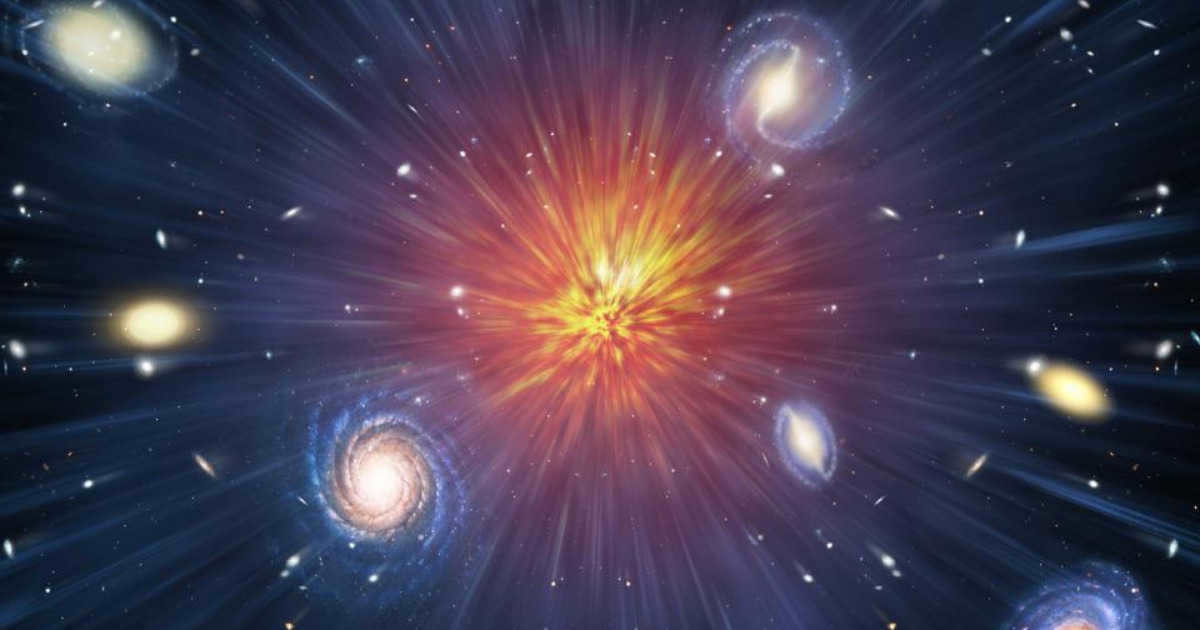
At this point in time, the Universe contained protons, neutrons, electrons, and photons. Photons were present in much larger quantities compared to massive particles. All four major forces had taken on their current forms. Now, it was time for the crucial process of nucleosynthesis to commence.
In simple terms, nucleosynthesis refers to the creation of new atomic nuclei from pre-existing nucleons and smaller nuclei. It is the mechanism responsible for the formation of a majority of the heavier elements in our vast universe.
Eventually, after the Big Bang occurred, it took 3 minutes for the Universe’s temperature to fall below 1 billion degrees Kelvin. During this time, the photons that existed had an average energy of 1.5 x 10 -14 joules, which happened to be the same as the binding energy of helium nuclei. As a result, at the 3-minute mark, deuterium, protons, and neutrons combined in different ways to create helium nuclei.

